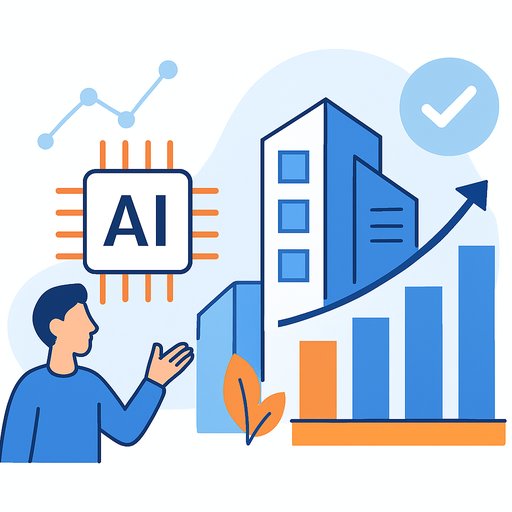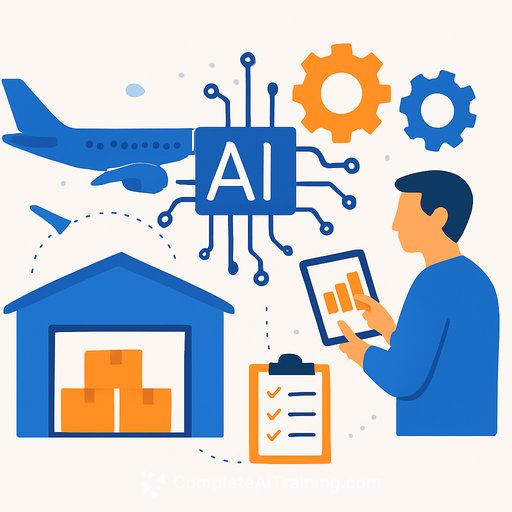Move past pilots: make AI native for operations
Experiment time is over. Ops leaders are now asked for results that show up in KPIs, not slide decks. That requires intelligence built into the core of how work gets done, from data to systems to the workflows your teams touch every day.
The companies that win won't bolt on another tool. They will rebuild from the data layer up so every decision benefits from trusted, real-time intelligence-and they'll prove ROI from day one.
What "AI native" actually means for Ops
AI native is not a model or a dashboard. It's an operating model: a connected ecosystem where data, models, workflows, and governance move together from insight to action. You bring AI to the data, keep control, and make intelligence reusable across the business.
No one does this alone. You'll need open integrations across predictive engines, workflow automation, document intelligence, observability, and a shared data foundation to keep everything in sync.
The three shifts
1) Build trust: from fragmented data to synced foundations
AI is only as good as the data it learns from. Most enterprises still run on scattered datasets across clouds, data centers, and apps with different rules. The fix is architectural: unify access without reckless copying, preserve lineage, and enforce policy everywhere.
- Map critical data domains and define data "contracts" (owners, quality, refresh cadence).
- Adopt a catalog plus policy engine for access control, masking, and audit trails.
- Push compute to where the data lives to cut duplication and drift.
- Set data SLOs that tie to business KPIs (forecast error, SLA breach rate, cost-to-serve).
- Use a single glossary so metrics mean the same thing across teams.
2) Build systems: from single-model thinking to system-level intelligence
The leap isn't another model-it's wiring data, models, and actions into a feedback loop that learns. Think living systems that observe, predict, and adapt, with oversight by design. No "set it and forget it."
- Adopt event-driven architecture so models react to real-time signals.
- Stand up a feature store, model registry, and CI/CD for ML to standardize reuse and rollbacks.
- Add model observability (quality, drift, bias, latency) and tie alerts to on-call runbooks.
- Use guardrails: policy checks, PII redaction, approval steps for high-risk actions.
- Plan reliability: blue/green deploys, canaries, A/B, clear RTO/RPO for AI services.
3) Build workflows: from isolated experiments to full-scale production
Value shows up when AI runs inside real work. Move models out of labs and seat them directly in processes like demand planning, fraud detection, IT ops automation, and customer service. Deploy where data lives-cloud, data center, or edge-and make it accessible to the people doing the work.
- Map a target workflow end-to-end; insert decision points where AI can cut time or errors.
- Automate handoffs (tickets, orders, alerts) so predictions trigger action.
- Keep a human in the loop for high-impact or ambiguous calls with clear escalation rules.
- Instrument everything: latency, throughput, acceptance rate, override rate.
- Train frontline teams on prompts, review practices, and failure modes. If you need structured upskilling, see our AI courses by job.
What to measure: ROI you can prove
- Forecast error (MAPE/WAPE) and inventory turns.
- MTTR for incidents; % auto-resolved tickets; change failure rate.
- Fraud catch rate vs. false positives; chargeback reduction.
- Customer handle time, first-contact resolution, CSAT/NPS uplift.
- OEE or utilization, scrap/rework, energy per unit produced.
- Cost-to-serve per order/case; hours returned to teams.
- Model drift time-to-detect and time-to-recover; data SLO adherence.
A 90-day plan for Operations
- Days 0-30: Pick one high-volume workflow with clear pain (e.g., ticket triage). Baseline metrics. Inventory the data. Lock in access policies, masking, and lineage.
- Days 31-60: Define decision points and guardrails. Build a minimal data pipeline, feature set, and model. Set up CI/CD, canary deploys, and observability.
- Days 61-90: Ship to a small production segment. Measure impact daily. Train operators. Document runbooks and fallbacks. If ROI holds, scale to the next segment.
Governance that scales with you
Ethics and security can't be an afterthought. Bake in transparency, policy checks, and regional controls from the start so AI stays within your risk appetite and local rules. Use a standards-based approach so audits are simple and repeatable.
If you want a reference framework for risk and governance, review the NIST AI Risk Management Framework.
Bringing it full circle
The shift to AI native is moving fast, and it will test how you run data, systems, and trust. Treat intelligence as a design principle under your operations, not a side project. Build the foundation once, then plug in use cases repeatedly.
Many enterprises are already doing this through open ecosystems that combine workflow automation, predictive analytics, document intelligence, and AI observability on a unified data layer. That's how intelligence becomes pervasive, operational, and durable-long after the first deployment.
Next step
Pick one workflow. Define the decision points. Add data, then feedback. Prove the uplift, publish the metrics, and repeat. If your team needs a primer on automation tactics, browse our automation resources.
Your membership also unlocks:






